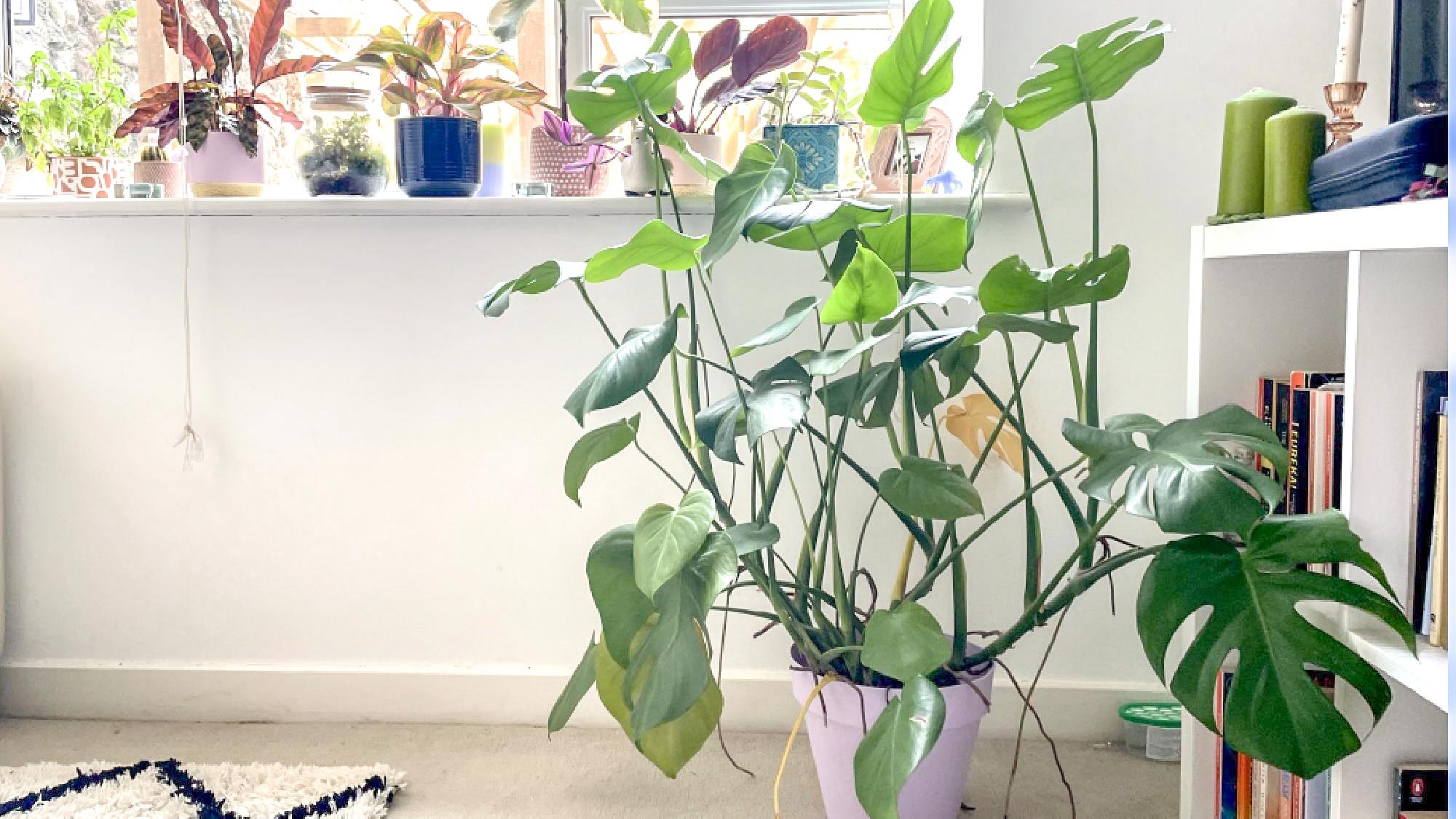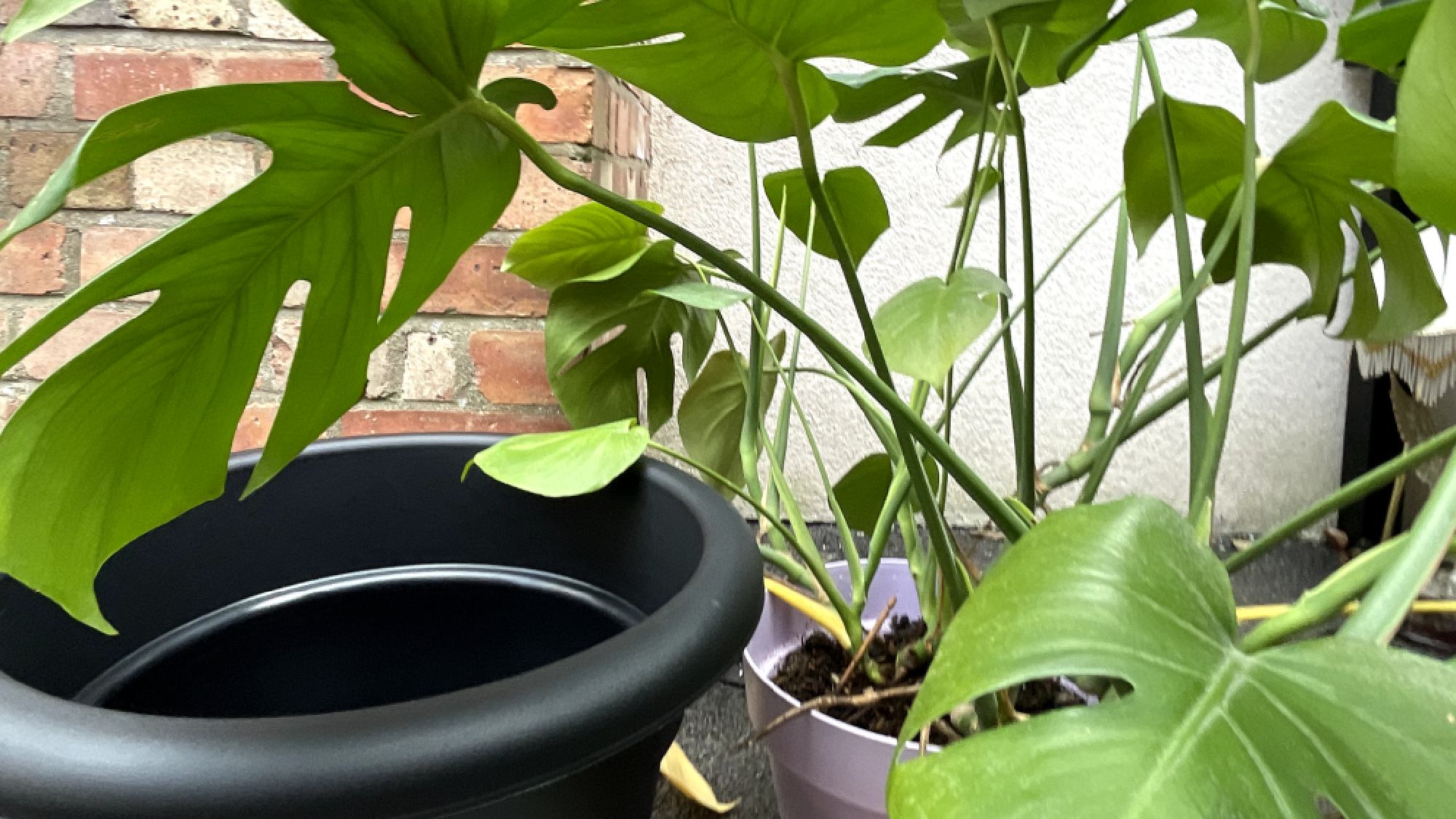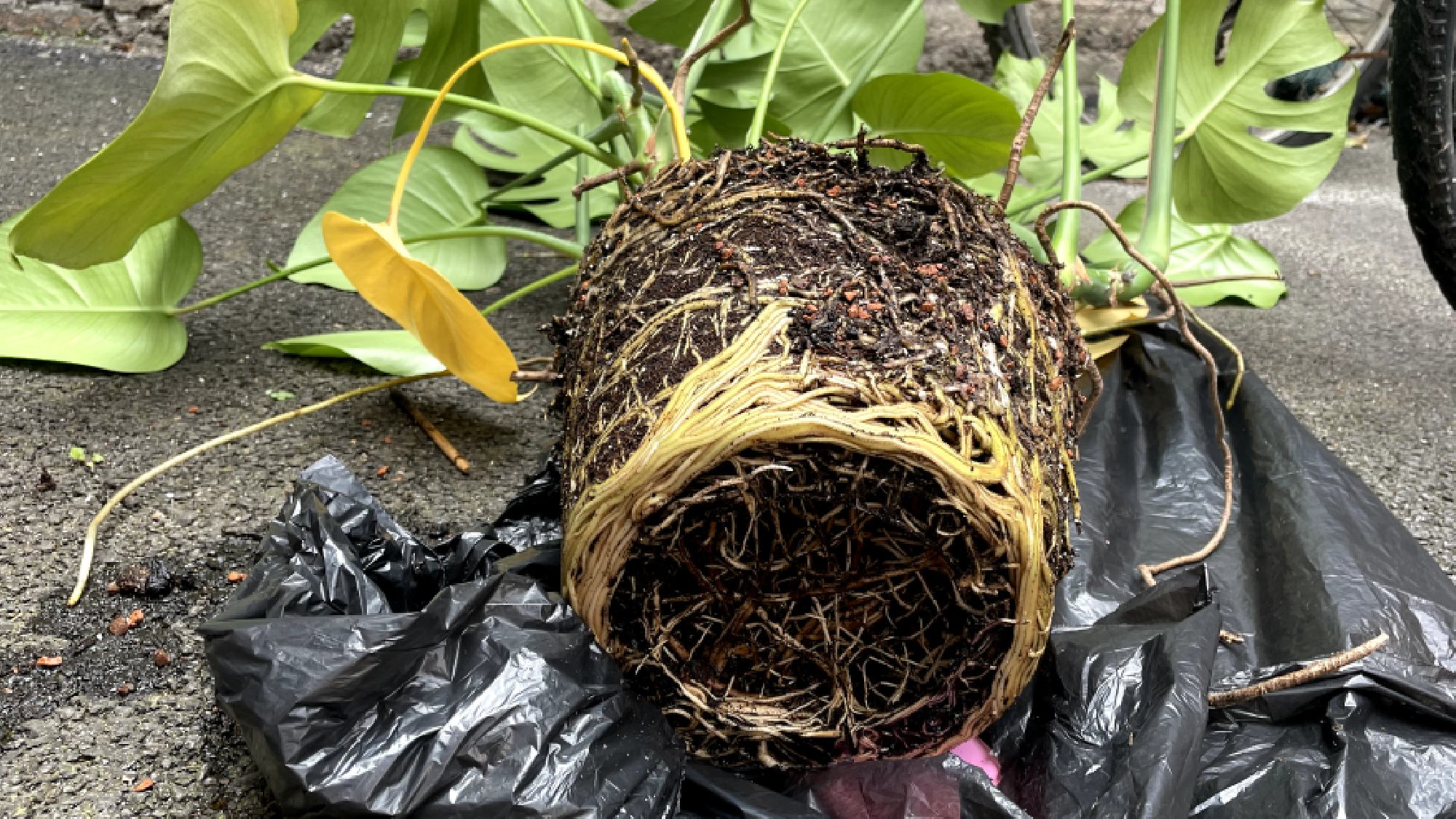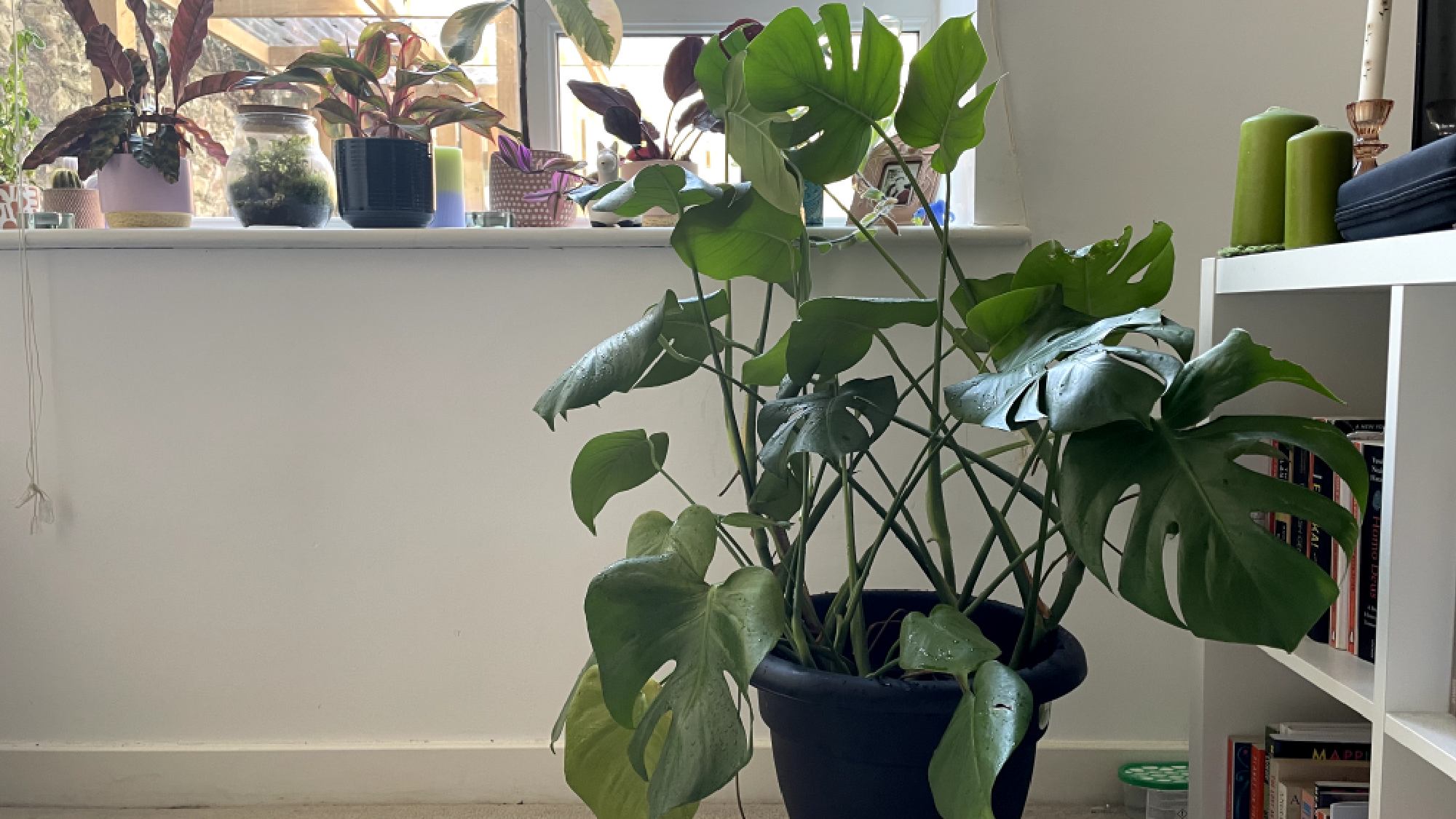Houseplants taking over? Here's how to repot a Swiss cheese plant

When it comes to houseplants, I thought I'd seen it all. From learning how to spot a thirsty houseplant to discovering you can double your money by propagating a Chinese money plant, I've dabbled in various green adventures. But nothing prepared me for the mammoth task of repotting my monstera, more commonly known as the Swiss cheese plant.
This leafy giant, one of the best plants to cool down your home, had outgrown its pot after being repotted a few years ago. Its roots were bursting at the seams, and its leaves were sprawling across my living room like a botanical explosion. It was clear: this Swiss cheese plant needed more real estate.
In this guide, I'll walk you through the journey of repotting a large plant like the monstera. Spoiler alert: it involves heavy lifting, a dash of panic, and a whole lot of soil. Lets get into it.
1. Assessing the need for repotting

When addressing the needs of a large Swiss cheese plant, it's crucial to first determine if repotting is necessary. Key indicators include roots emerging from drainage holes, rapidly drying soil, and stunted growth. If your plant is noticeably leaning and it's been 2-3 years since its last repotting, it's time to take action.
A significant sign I observed was the yellowing of lower leaves — a clear indication of nutrient deficiency often associated with the need for a larger pot. This discoloration serves as a reliable marker that the plant is struggling to obtain sufficient nutrients from its current container.
2. Choosing the right pot and soil

Upon deciding to repot, selecting an appropriate new container is essential. The pot diameter should be 2-4 inches larger than the current one, ensuring it has adequate drainage holes to prevent water retention.
Prior to the repotting process, it's important to prepare your plant adequately. Thoroughly water it a day or two in advance to ensure proper hydration of the root system. Proper soil and pot selection will promote robust growth and help maintain the deep green coloration of the leaves.
3. Preparing for repotting

When ready to repot, carefully extract the plant from its current container, which will require manipulation. Once removed, conduct a thorough inspection of the root system, pruning any dead or excessively long roots.
This root maintenance encourages healthy new growth and prevents the plant from becoming root-bound in its new pot.
4. Repotting the plant

Place a layer of fresh soil in the new pot, then carefully position the plant in the center, ensuring it sits at the same depth as before. Gradually fill in around the roots, gently firming the soil to eliminate air pockets.
Once filled, give your plant a good watering to help settle the soil. Finally, wipe down the leaves to remove any dirt, and place your newly repotted giant in a suitable spot.
Get instant access to breaking news, the hottest reviews, great deals and helpful tips.
5. After repotting

In the weeks following repotting, most Swiss cheese plants show significant signs of improvement. The foliage typically becomes more vibrant, with a richer green color replacing any previous yellowing. New growth often emerges at an increased rate, with fresh leaves unfurling more frequently.
These positive changes indicate that the repotting process has successfully addressed the plant's need for more space and fresh nutrients. However, it's important to note that individual results may vary depending on factors such as the plant's initial condition, the care provided after repotting, and environmental conditions.
The world of indoor gardening is full of surprises — did you know there are even houseplants you can grow without soil? If you're feeling inspired to expand your indoor jungle, consider exploring plants that will thrive in your kitchen or the most powerful houseplants to ease stress and give your mood a boost.

Kaycee is Tom's Guide's How-To Editor, known for tutorials that skip the fluff and get straight to what works. She writes across AI, homes, phones, and everything in between — because life doesn't stick to categories and neither should good advice. With years of experience in tech and content creation, she's built her reputation on turning complicated subjects into straightforward solutions. Kaycee is also an award-winning poet and co-editor at Fox and Star Books. Her debut collection is published by Bloodaxe, with a second book in the works.
